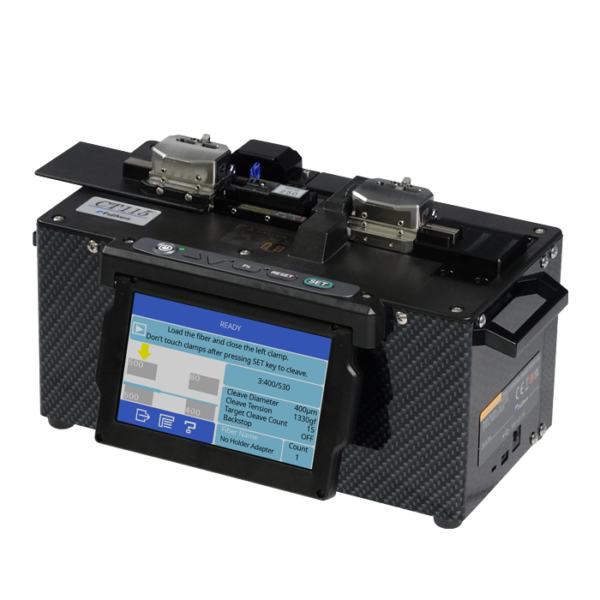Increasing Output Accuracy with an Optical Fibre Diameter Analyser
Increasing Output Accuracy with an Optical Fibre Diameter Analyser
Blog Article
Enhance Your Fibre Optic Projects With an Effective Diameter Analyser
The assimilation of an effective diameter analyser right into fibre optic jobs serves as a crucial element in attaining accuracy and uniformity. By promoting exact diameter measurements, these analysers not just enhance the high quality of installations yet additionally mitigate possible compatibility concerns among parts. Additionally, the sophisticated capabilities of contemporary analysers streamline data collection and quality assurance processes. As we check out the important features and benefits of these devices, it becomes evident exactly how they can change project end results and make sure adherence to market standards. What remains to be talked about is how to effectively apply these analysers in your existing process.
Value of Diameter Measurement
Measuring the diameter of fibre optic wires is a crucial task that makes certain ideal efficiency and integrity in communication systems. Exact size dimension is vital for numerous reasons, primarily for maintaining signal integrity and lessening loss. A cable television's diameter directly influences its capability to transfer light effectively; deviations from the defined size can lead to increased depletion, which affects the general efficiency of the network.
Moreover, accurate measurement is essential during the installation and upkeep of fibre optic systems. An improper fit in between wires and connectors can cause signal destruction or complete failure of communication web links. By ensuring that diameters are within specified tolerances, professionals can improve compatibility in between elements, resulting in improved system integrity.
Additionally, size measurement plays a substantial duty in quality assurance throughout production. Uniformity in the size of fibre optic cords is essential for making certain uniform efficiency across different batches. optical fibre diameter analyser. This consistency assists makers maintain industry standards and fosters self-confidence among end-users
Attributes of an Effective Analyser
An effective analyser for fiber optic tasks need to incorporate a number of essential attributes that improve precision and functionality in size measurement. First of all, high-resolution optical sensors are vital for specific diameter readings, making it possible for users to identify even the smallest variants in fibre density. These sensing units need to be complemented by sophisticated calibration systems, guaranteeing regular performance throughout different conditions and materials.
Secondly, an easy to use interface is essential for promoting ease of procedure. This consists of user-friendly software that enables for seamless data input and output, along with aesthetic depictions of the measurements taken. A mobile design boosts usability in numerous field environments, making it much easier to carry out evaluations on-site.
Furthermore, the analyser needs to sustain numerous measurement modes, accommodating various fibre kinds and applications. The capacity to shop and fetch historic information is one more crucial feature, enabling customers to track efficiency in time and make educated decisions.
Benefits for Fibre Optic Projects
Implementing a size analyser in fibre optic projects offers considerable benefits that considerably improve project performance and top quality. One of the main benefits is the capability to ensure precise measurements review of fiber size, which is critical for maintaining optimum efficiency in fiber optic systems. Precise size readings help in the identification of incongruities that can result in indicate destruction or loss, therefore making sure premium transmission.
Additionally, the usage of a size analyser simplifies the quality control process. By automating dimension tasks, task teams can reduce the moment invested in manual examinations, causing faster project conclusion and decreased labour prices. This efficiency additionally permits even more strenuous testing methods, resulting in improved product dependability.
Additionally, consistency in fibre size measurements promotes compatibility with various other fibre optic elements, reducing the threat of setup mistakes and boosting overall system performance. The incorporation of a diameter analyser not only aids in preserving market criteria however also promotes confidence in project deliverables.
Combination Into Existing Operations
Incorporating a size analyser right into existing workflows can dramatically boost the functional performance of fibre optic tasks. By flawlessly including this modern technology, teams can attain specific measurements that are critical to keeping the integrity and performance of fiber optic systems. This combination enables real-time data collection and analysis, which can be crucial during the production and installment stages.
Moreover, the ability to automate size dimension processes lowers the possibility for human error, making sure consistent quality assurance throughout the job lifecycle. The data generated can be easily shared throughout platforms, assisting in partnership among designers, professionals, and project supervisors. This ease of access boosts decision-making and accelerates project timelines.
Choosing the Right Size Analyser
When picking a diameter analyser for fiber optic jobs, it is vital to take into consideration a number of crucial factors that directly influence dimension accuracy and functional effectiveness. Initially, the resolution and accuracy of the analyser ought to line up with the particular requirements of your project. Higher resolution tools can identify minute variants in diameter, which is important for ensuring optimal performance in fiber optic systems.
For jobs with limited deadlines, a diameter analyser that try this website provides fast information acquisition can the original source considerably enhance performance. Additionally, take into consideration the analyser's compatibility with existing systems and software application.
Another important variable is the variety of diameters the analyser can accommodate. By meticulously examining these elements, you can select a size analyser that improves the efficiency and precision of your fibre optic tasks.
Final Thought
In verdict, the integration of an effective size analyser is critical for boosting fibre optic jobs. Precise diameter dimensions guarantee optimum performance and dependability while minimizing setup mistakes (optical fibre diameter analyser).
A wire's diameter directly affects its capacity to transmit light effectively; variances from the defined diameter can lead to raised depletion, which impacts the total efficiency of the network.

Report this page